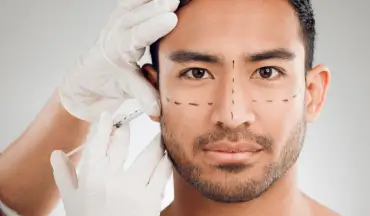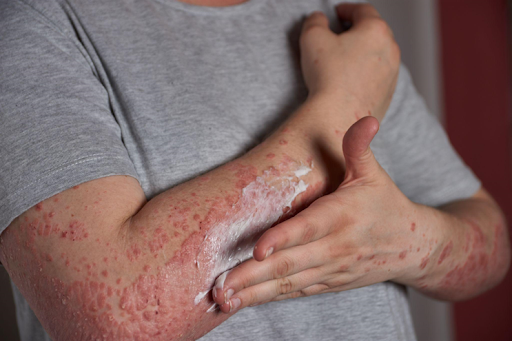What is Psoriasis?
Psoriasis is a skin disease that is characterised by symptoms such as areas of discoloured skin, itchy rashes, and scaly patches of skin. These symptoms are caused by inflammation of the skin around the knees, scalp, trunk, and elbows.
The condition is classified as an autoimmune disease, which occurs when our immune system attacks healthy cells in our bodies instead of harmful viruses and bacteria.
The exact causes of the ailment are still unknown, but it is believed to be linked to several genetic and environmental factors.
Psoriasis is a chronic disease, meaning that it is frequently recurring, with no known cure. However, patients can manage the severity of psoriasis with the aid of proper medical care and treatment from experienced dermatologists.
Psoriasis Symptoms
The symptoms of psoriasis can vary on a case-to-case basis. These differences can mostly be attributed to the type of psoriasis, environmental triggers, and individualistic traits. The most common type of psoriasis is plaque psoriasis, which displays the following symptoms:
-
The appearance of patchy rashes on the skin.
-
These rashes can manifest in different ways such as severe skin eruptions or areas of flaky scales across the body.
-
Cyclic rashes that flare for a few weeks or months and then subside
-
The colour of rashes varies depending on the patient’s skin pigmentation
-
Appears as purple with grey-coloured scales on brown or black skin
-
Appears as red or pink with silver-coloured scales on lighter skin
-
Minor cases of scaling (mostly seen in paediatric cases)
-
Spots of dry and cracked skin that result in bleeding
-
Frequent soreness, itching, and burning sensations
Rashes that result from psoriasis are usually recurring. Patients are likely to experience flares of relevant symptoms that last several weeks or months before symptoms begin to subside.
Types of Psoriasis
There are different variations of psoriasis that have notable differences from plaque psoriasis. These include:
- Pustular psoriasis is characterised by scaly red streaks of blisters containing pus (also known as pustules) on the skin. This form of psoriasis most commonly manifests itself on a patient’s palms and soles.
- Guttate psoriasis is a type of psoriasis that manifests as small, tear-shaped spots on the patient’s torso and limbs. The condition is known to occur during one’s childhood, or early into adulthood as a result of certain triggers such as respiratory complications or skin-related injuries.
- Inverse psoriasis typically occurs in skin folds (areas like the groin, armpits, and buttocks) as patches of smooth red skin inflammations. A common trigger of inverse psoriasis comes from fungal infections.
- Erythrodermic psoriasis is a rare form of psoriasis described as a peeling rash that causes the skin to take on dark red discolouration. It is linked to extreme sunburns and infections and requires immediate medical attention before it causes long-term damage that enables other serious illnesses.
- Nail psoriasis, as the name suggests, causes abnormal growths in the fingernails and toenails. This causes nails to become discoloured, develop dents, and slowly begin to detach themselves from the nail bed (onycholysis).
Consider scheduling a consultation with a licensed dermatologist at Bukit Tinggi Medical Centre’s SKINCENTRIC if you are experiencing symptoms that resemble the above conditions.
Our professionals at SKINCENTRIC provide comprehensive counselling and in-depth evaluations that help patients mitigate the effects of various psoriasis symptoms. This way, patients are empowered to live fulfilling lives while managing their skin conditions with proper treatment and skin care routines.








